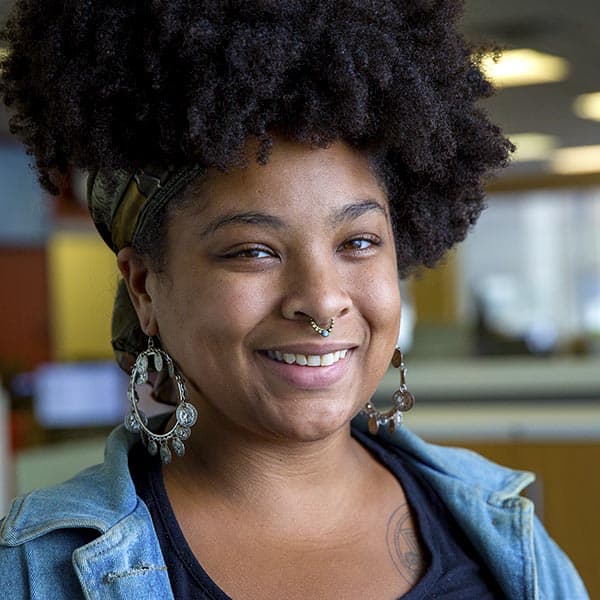Advertisement
Commentary
Simone Leigh's work at the ICA is an ode to Black womanhood
Resume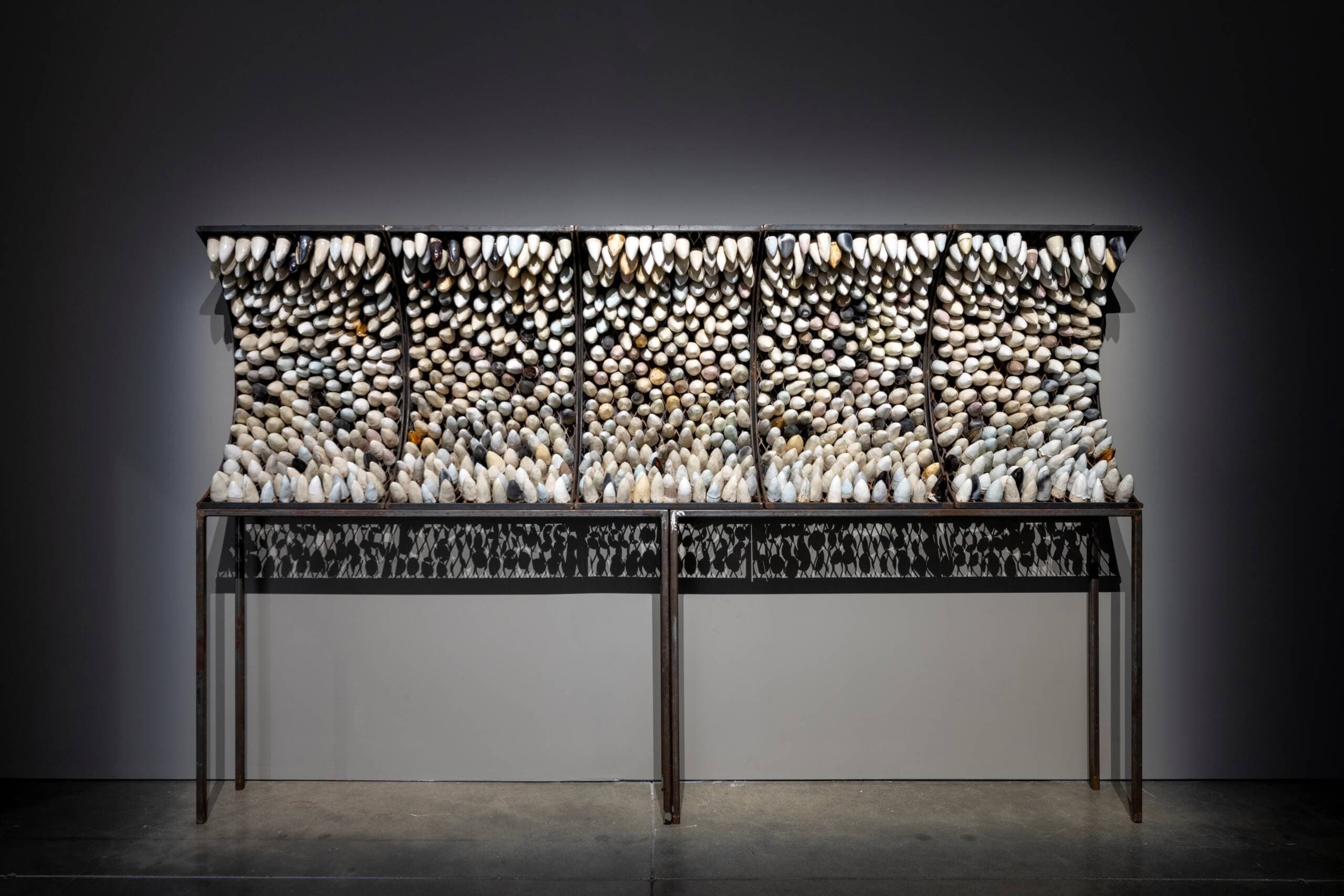
What in the world do you write about an artist like Simone Leigh?
She’s had some of the world’s most eminent Black thinkers and writers — like Saidiya Hartman and Hortense Spillers — ruminate on her work and artistic practice. I thought about this as I waited for Leigh at the entrance of her eponymous exhibit at the ICA. I was one of around 30 people at the press preview. The exhibit surveys work created over the past 20 years of Leigh’s artistic career, bringing old and new pieces into conversation with one another. Nine pieces are from the 59th Venice Biennale, where Leigh became the first Black woman in history to represent the United States. Many of us present at the preview were Black women writers, artists and organizers from across the country, drawn like moths to a flame to see the art firsthand.
When I meet with Leigh the following Thursday, I tell her I was at the press preview. “There were so many fabulous Black women. I was happy. And surprised,” she said with a smile. “It's been really overwhelming for me and more emotional than I thought it would be. … The generation before me … those black women got nothing. They did real work to get me here.”
It’s a nod to the sobering reality that many art spaces are still predominantly white — from art critics to curators to gallerists to museum-goers. Of course, there is no limitation on who can connect with and appreciate Leigh’s art. But to engage with the “radical gestures” of Leigh’s work, as she puts it, is an entirely different story. Leigh walked me through the exhibit, stopping in front of her first piece, the gold-sheened, bronze sculpture “Cupboard” (2022) that boasts a wide, pannier-style raffia skirt and woman’s torso. A Mississippi restaurant in the shape of a mammy (a racist archetype of Black womanhood) named “Mammy’s Cupboard” provided inspiration for Leigh.
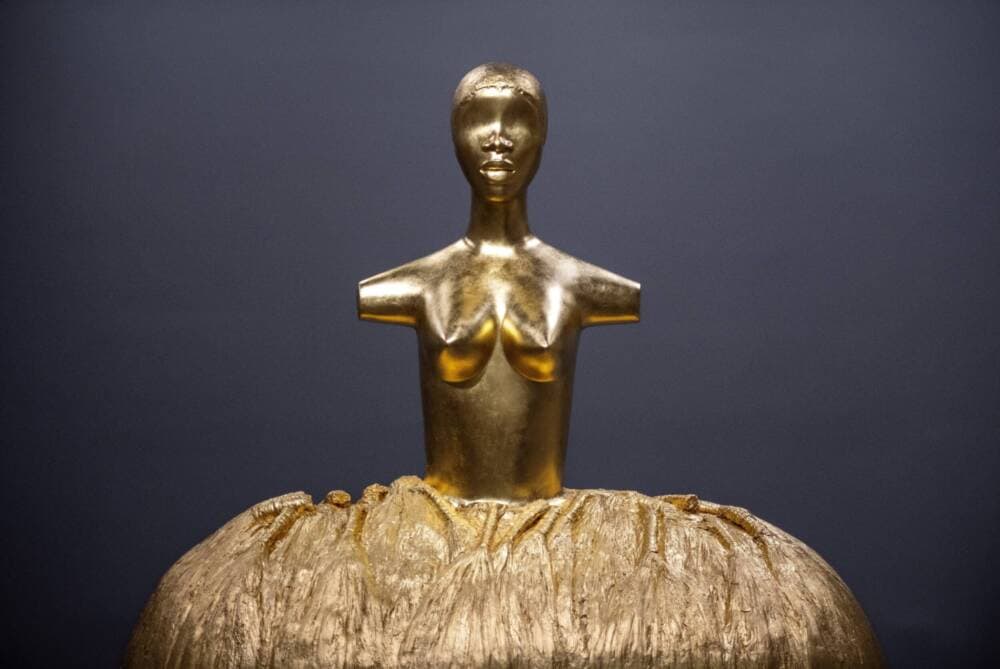
“I love the kind of forms that building brought together,” she said. “The concept of a Black maternal, a selfless Black maternal. Even though there includes a lot of darkness in these archetypes, especially this idea of the restaurant where you would actually enter the skirt and have pleasure eating food inside this woman's body … all those things are really interesting to me and I think is why I've been sort of thinking about that kind of combination of forms and what it does.”
This alchemy of Black bodies with architectural forms or tools surfaces again and again, especially in “Jug.” Though we don’t stop to speak directly about this massive bronze work, the Black female form married with a vessel (an item valued for its utility) is a commentary on the ways in which (unpaid, unrecognized) labor has inscribed, defined and reinforced perceptions of Black womanhood. But Leigh subverts these stereotypical notions of Blackness, transforming items tied to domesticity into monumental works that visually and metaphorically take up space.
I’m reminded that Leigh’s praxis of “Black women as architecture,” as she puts it, goes beyond her many works alchemizing the Black female form. Her own relationships with the Black women in her life have provided an additional framework, a prism for Leigh to further chart the terrains of Black womanhood. We see this in “Sharifa,” one of the key bronze sculptures created for the Venice Biennale. Its form is based on Sharifa Rhodes-Pitts, one of Leigh’s close friends and artistic collaborators. It’s perhaps one of the first portraits she’s ever done, Leigh said.
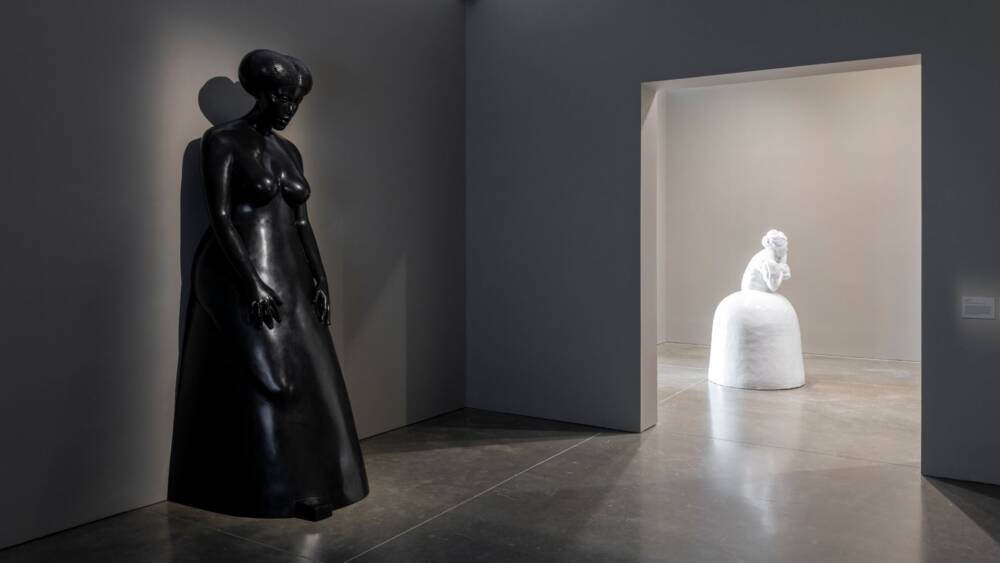
“I decided that it was a sculpture … to sort of represent Sharifa, but also the role of Black feminist theory in my work. And I feel like I'm actually in dialogue with many Black feminist theorists, even if they don't know that I am,” she said with a laugh. This sculpture is also one of the first direct comments Leigh makes about “inward gazing,” the practice of “focusing on oneself, one's own communities, one's own history, one's own tools as a form of recovery and resistance.”
This priority of the interiority of Black women’s lives is articulated in “The Last Garment,” the second-to-last piece in the exhibit. It’s a bronze sculpture of a woman, bent at the waist, washing clothing by hand. Surrounding her is a massive pool of dark, still water. It’s backdropped by a massive window that looks out onto the oscillating cobalt blue of the Boston Harbor.
For this piece, “I used an archival image, something that has been used as a souvenir to circulate ideas around the Black body, Black people and what we're here to do and what we mean,” Leigh said. The image of the washerwoman is a classic, "and it's a part of many, many postcards that were created of Jamaican women washing clothes in the river. ... It has been a really powerful way to disseminate ideas.”
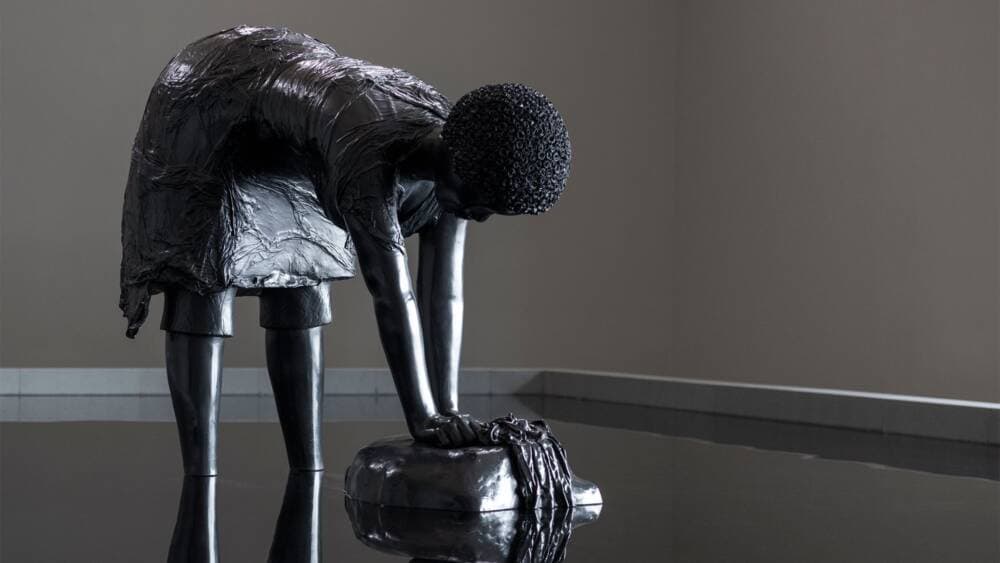
We don’t know much about the woman pictured on the original postcard. What was her name? Was her family awaiting her return when her photo was captured? Did she consent to her photo being taken? The colonial record was not concerned with portraying this woman as a nuanced being with humanity — rather, it attempted to flatten her into a caricature, a skewed representation of Blackness.
But in “Last Garment,” Leigh hands back some autonomy to the pictured woman. In the bronze sculpture, the woman’s gaze is firmly set on her own reflection, unconcerned and uninterested in who may be looking. Her face, like the faces in many of Leigh’s works, has lips and a nose but no distinct eyes. In an interview with The Art Newspaper in 2019, Leigh was asked if the absence of the eyes had something to do with reclaiming the power of the “gaze.” Her answer was that it was a form of “abstraction.”
In many ways, abstraction frees Leigh from the tedium of representational, figurative art. It is a reclamation of the imaginative space that is so often held captive by a realism built on Western standards. Leigh is less concerned with precise replication because her work is not about conveying the world as it is. Instead, it conveys the world as it should be, what it could be if Black women were truly at its center.
In her opening remarks at the Venice Biennale, Leigh said, “In order to tell the truth, you need to … formally move things around in a way that reveals something more true than fact." Indeed, “facts” such as the historical record and archival photos provide a springboard for Leigh’s work. But those facts are not “truth.” Truth is relative to the subject and Black female subjectivity is rarely, if ever, taken as truth by the world at large.
Through her art, Leigh becomes a “truth-teller,” an artistic griot who is able to help canonize the experiences and lives of Black women. The abstraction of the woman’s face in “Last Garment” transforms her into an avatar, a representative of sorts for all of the Black women whose names are lost to time. Though not formally labeled a memorial or monument, in many ways that’s exactly what it is.
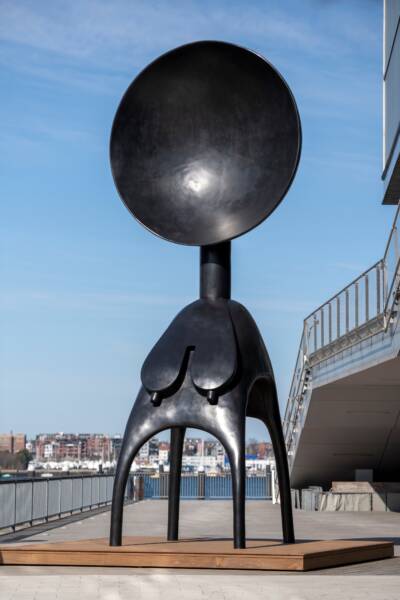
The way that Leigh reaches back into the past, closes her fingers around a particular element, pulls it forward into the present, then throws it into the future by immortalizing it in her work defies the mechanics of time. Like a kiln, a specific environment has kneaded and shaped the identity of Leigh’s artist praxis. Consequently, one cannot truly appreciate or understand Leigh’s work without reckoning with the dark pasts that inform our present and potential future.
As we end the tour and say our goodbyes, I’m taken back to her comments about the “radical gestures” embedded into her work. What does it mean to not just see those gestures but to grasp and understand them? It’s so much more than viewing Leigh’s art, analyzing it for its form and material and cracking open the feelings it brings up inside.
When it comes to her expansive artistic practice, it takes a concerted and intentional effort to unlearn everything that you’ve been taught. It takes becoming deeply involved with the stakes at hand — the epistemologies embedded in the lives of Black women. It takes ripping apart the veil to see clearly, perhaps for the first time. But the thing about Leigh’s work is that it is not begging you to understand it. Either you do, or attempt to, or you don’t. Like “Sharifa” and “The Last Garment,” there is an interiority to her art that needs no external validation to affirm its inherent importance.
As I left the ICA, I looked up at Leigh’s “Satellite” sculpture, standing tall against the bright sky over Boston Harbor. I’m reminded again that, like the Black women who inform Leigh’s work, her art has meaning, all on its own.
The survey of Simone Leigh's work is on view at the ICA through Sept. 4.
This segment aired on April 19, 2023.
